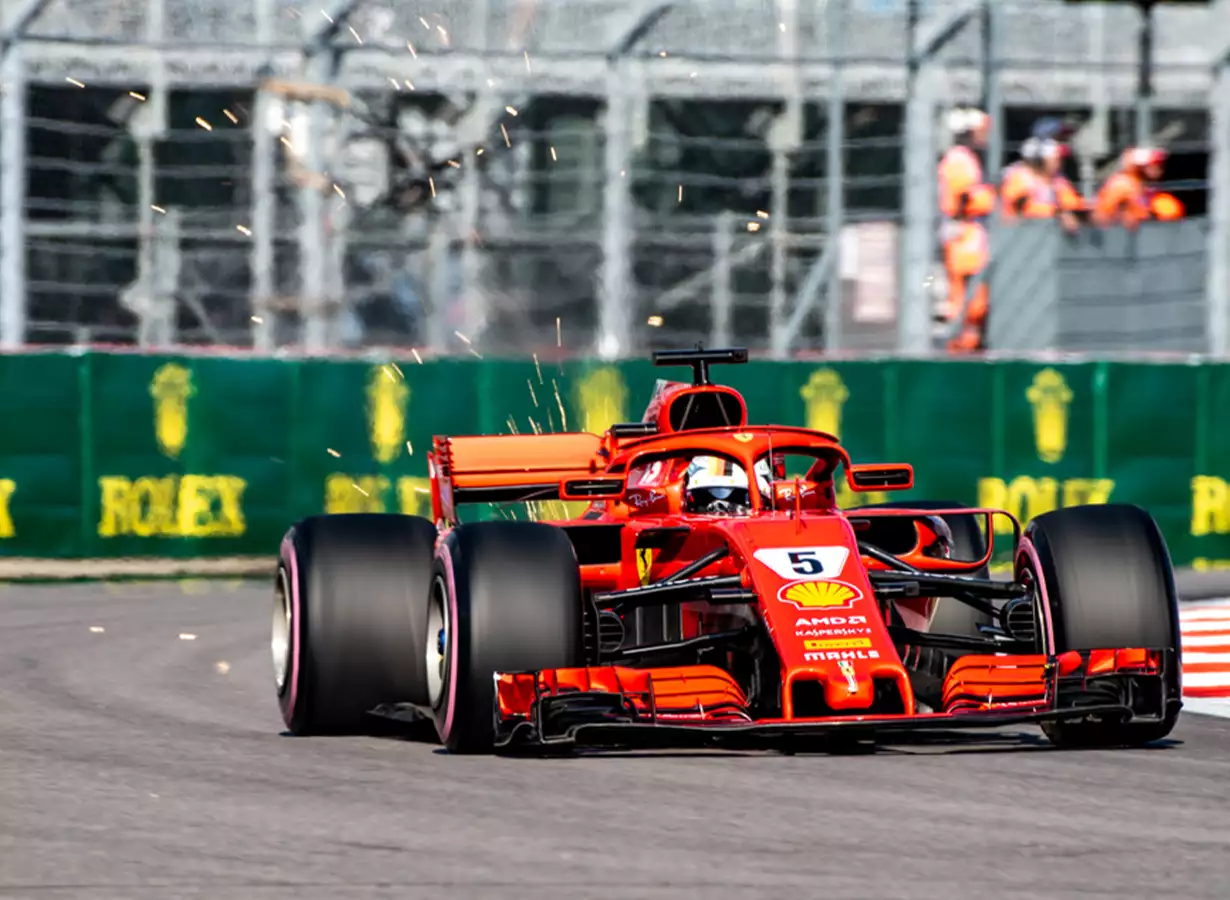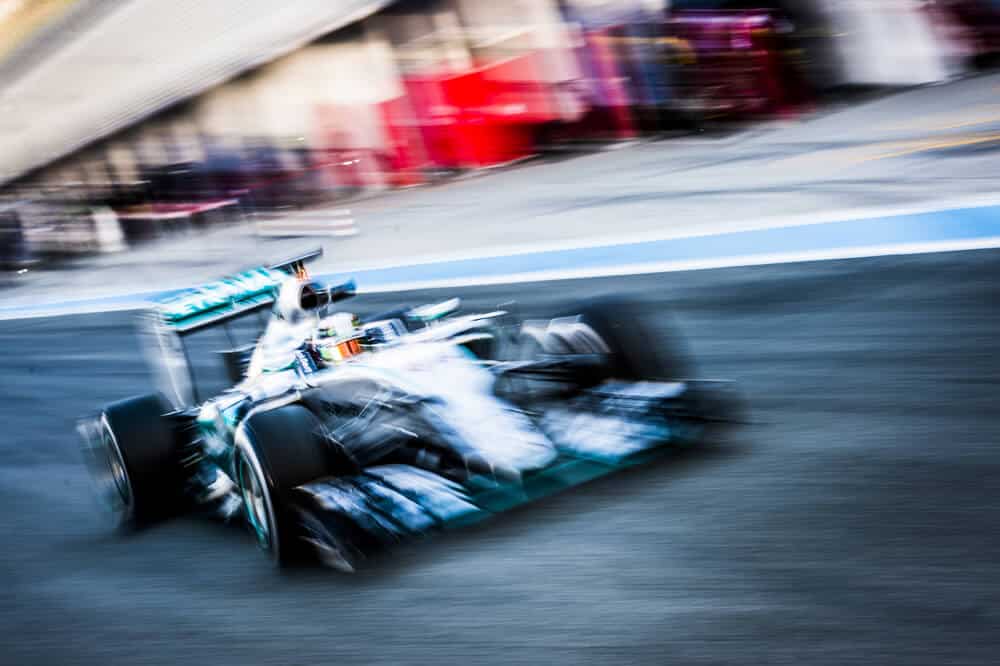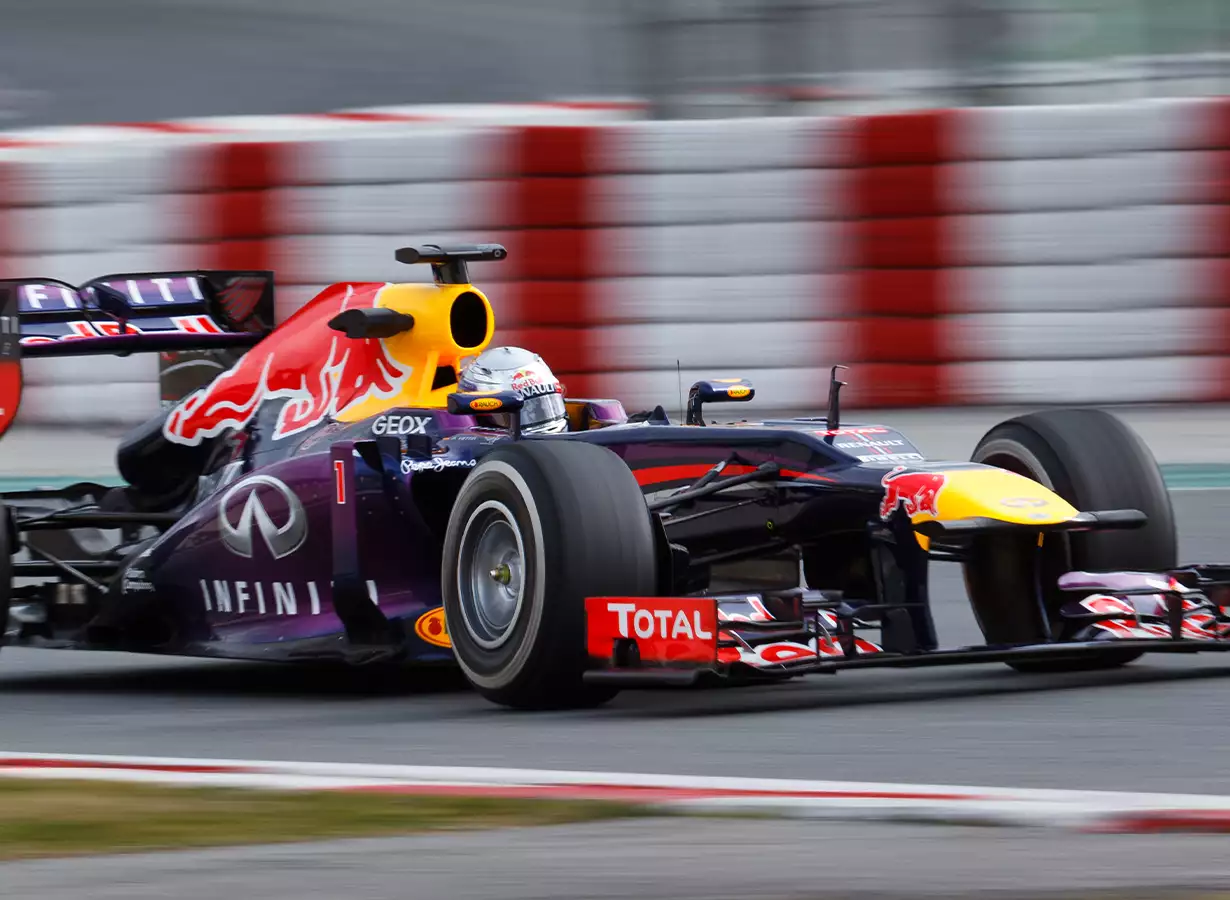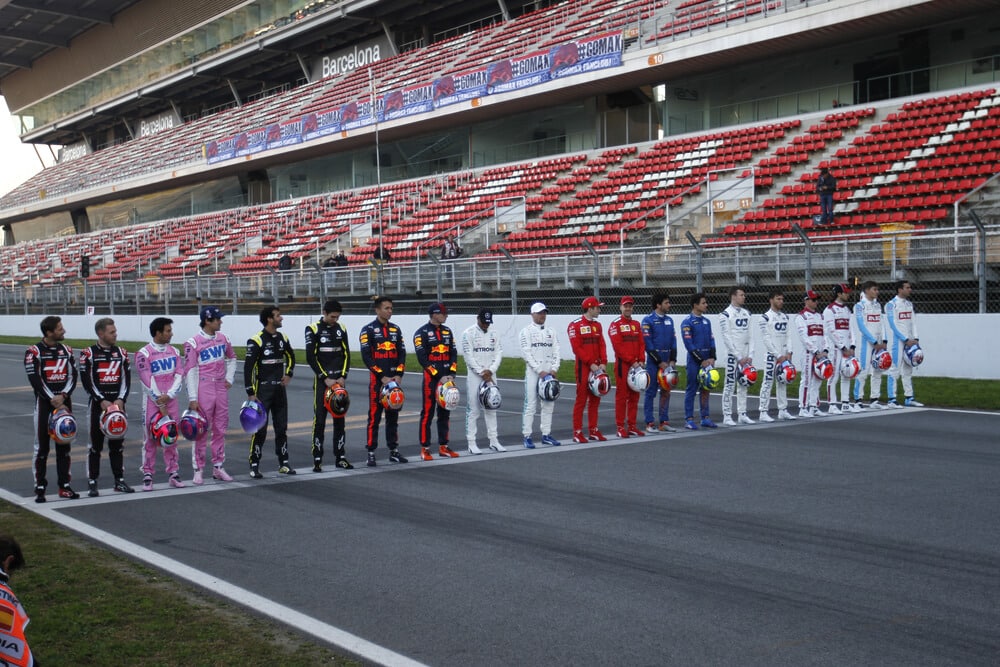If you’ve ever watched a modern Formula 1 race, you’ve probably seen sparks shoot out from beneath a car as it speeds down a straight or through a high-speed turn.
But why does this happen, and what effect does it have on the cars?
Let’s take a look at why a F1 car sparks.
Table of Contents
Watch this video to understand why F1 cars spark.
Why do Formula 1 cars spark?
The sparks on F1 cars are generated by titanium skid blocks embedded within the plank. The skid blocks exist to protect the plank from damage, and they protrude no more than 3mm from the plank itself. When the car bottoms out, the skid blocks are the first to hit the ground, causing a shower of sparks behind the car.
Formula 1 cars have a plank running underneath the car from the back to just before the front wheels. The plank was originally designed by the FIA to reduce underbody aerodynamics while also preventing the car from bottoming out on the straights.
While you might think it’s made of carbon fiber or another highly specialized material, it’s actually made of Jabroc, a type of wood.
Jabroc is made of beechwood in a composite process that includes veneers and resin on each layer.
Key takeaways
Here are some key aspects regarding why F1 cars spark:
- You can see more sparks at the ends of straights. As the car’s speed increases, more downforce is generated, pushing the car lower to the ground.
- The sparks on F1 cars are generated by titanium skid blocks embedded within the plank.
- Titanium skid blocks were first used in Formula One in the 1980s and 1990s, and were reintroduced in 2015

Photo showing sparks behind a Formula One car.
Understanding sparks from a F1 car
Titanium skid blocks were first used in Formula One in the 1980s and 1990s, and were reintroduced in 2015.
The FIA initially tried titanium plates on Nico Rosberg and Kimi Raikkonen’s cars during the Austrian Grand Prix the previous season. The plates were chosen for their lower likelihood of detachment than the earlier metal plates that encased the Jabroc planks.
“The purpose of making them out of titanium is threefold: Firstly, it’s safer, because if they do come off they are about a third of the weight of the existing ones,”
said Charlie Whiting, the FIA’s technical director at the time.
“Secondly, the titanium wears some 2-2.5 times more quickly than the metal currently used. Thus cars will have to be run a little bit higher to manage wear and teams won’t be able to drag them on the ground quite as much as they have in the past.
“The third effect is that you will see a lot more sparks, which some people think will look a little more spectacular.”
Why do Formula 1 cars bottoming out?
Formula 1 cars bottom out for the same reason they were invented: downforce.
Cars are run low to the ground to increase the efficiency of the various aerodynamic devices on the car, especially in today’s new ground effect era.
Furthermore, the more downforce a car produces, the more it is pushed into the ground, further reducing its ride height.
That is why, if you look closely, you can see more sparks at the ends of straights. As the car’s speed increases, more downforce is generated, pushing the car lower to the ground.
For obvious reasons, sparks can also fly when a car passes over bumps and kerbs, or during spectacular crashes.
Is bottoming out a bad thing?
Yes and no.
While a car bottoming reduces downforce, if it happens on a straight it doesn’t do any harm. The issue arises when the bottoming out occurs in the middle of a turn, which can happen in faster corners.
Then there’s the issue of porpoising, which affects today’s ground effect cars in particular. In a nutshell, when a car bottoms out, it causes a rapid decrease in downforce, causing the car to return to its original position, returning the downforce, and repeating the process.
While a car bottoming reduces downforce, if it happens on a straight it doesn't do any harm. The issue arises when the bottoming out occurs in the middle of a turn, which can happen in faster corners.
Ivan Berets, Semi-professional driver
If that process occurs at a slow enough speed, it can cause issues in braking zones at the ends of straights and fast corners.
Ever since the reintroduction of titanium plates in 2015, sparks have once again become a part of F1, bringing back memories of legendary moments such as Nigel Mansell and Ayrton Senna going wheel-to-wheel at Barcelona in 1991.
And, while they were introduced solely for safety reasons, they have added a new dimension to the Formula 1 spectacle. So, thank you FIA.
Article sources
Learn more about Formula One
Want to learn more about F1? Then visit our Formula 1 glossary and dictionary.




